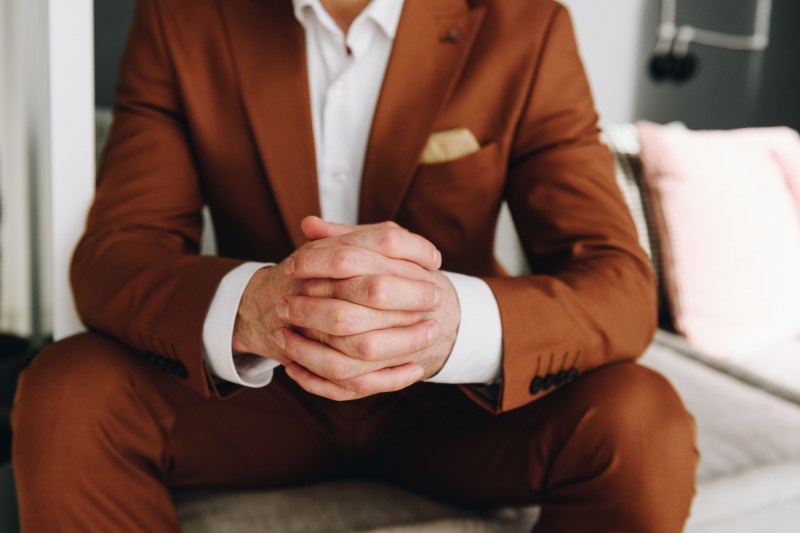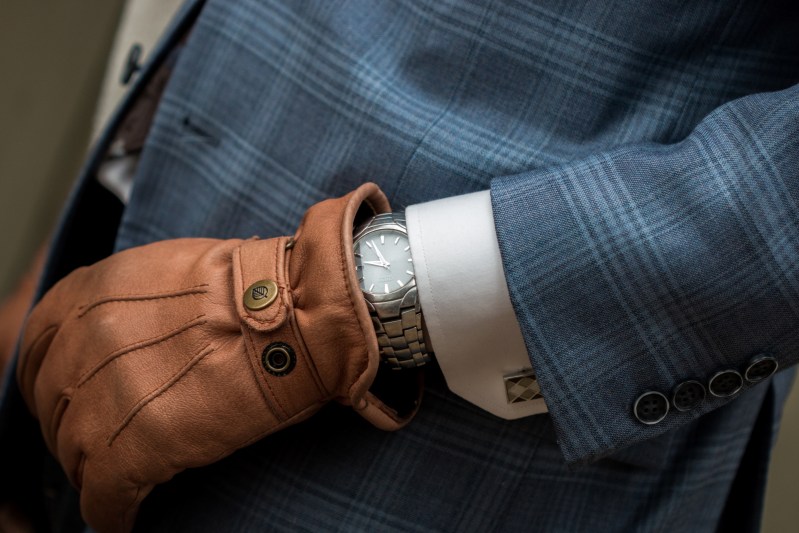There are a lot of times when men get a pass on how they dress. It isn’t because there is a privilege. It’s because we have been clueless about how to dress for a long time. We went from our mothers dressing us until we left the house to finding a partner who would do the same.
We have been allowed to be clueless on how to wear a suit, how to style a sweater, and what jeans we should wear. Of course, here at The Manual, we don’t accept that. We aspire to be better, to teach men to be better. With that in mind, we want to discuss the basics of how to dress men so they fit into specific dress codes. These men’s dress codes are the most common, from the most formal to the least formal.
White tie

White tie is the most formal of formal. This is where you will see men dressed to the nines; there is no slouching here. There will be an invitation for most of these events, with people still writing or sending them via snail mail. This is an old-school way and something you should be excited to do at least once in your life. This dress code began in the middle of the 19th century (ironically) as a more laid-back alternative to the Victorian dress of ruffled shirts and traditional evening dress of the day. There are a few things to keep in mind to adhere to the dress code.
- The shirt, vest, and tie should be white. Color is out of place in this environment.
- The shirt should be wing collared.
- Bow tie, no evening ties.
- The coat should be tailed. Waist length in the front and knee length in the back.
- The coat should be double breasted.
- The white waistcoat should extend below the waistline but not lower than the coat.
Black tie

The black-tie dress code is the newer version of white tie. When the white-tie dress code came about in the mid-1800s, Edward VII wanted to be even more laid back and swapped out his tailed dinner jacket for something more like what we see today. Nowadays, it’s the preferred version of formal wear. Losing the white tie and vest for a black tie and black vest gave a more evening feel. Most places that suggest formal wear in their invitations mean this dress code. Here is how to get the look right.
- The coat should have satin lapels in notch, peak, or shall.
- The tux can be black, white, or navy blue (it looks darker in artificial light).
- White is controversial and can make you stand out like a sore thumb. If you want to do something unique, opt for a white dinner jacket and stick with the black trousers. You can make it more subtle by opting for a white dinner jacket with black lapels.
- The trousers should have a satin seam down the sides of the legs.
- Stick with black in the tie and vest to avoid looking like you’re headed to prom.
- Finally, own the tuxedo, don’t rent it.
Black tie optional

Occasionally, you will get an invitation that says the dreaded words “Black Tie Optional.” While this may seem relatively straightforward, it has a bit of a complicated nuance behind it. When a host puts that on the invitation, it means a few things. The first is that the host will be wearing black0tie attire. The second, more unspoken, is that they want people to join them in their elevated attire.
While the invitation says optional, right there, in plain lettering, consider that they are simply being friendly and flexible. If someone has an event that requires a black tie, many people will opt not to go because they don’t want to go through the process of getting black-tie attire. They would rather have your presence than your presence in black tie. However, they are dressing for this occasion, which is important to them. Therefore, the way you dress signals how important they are to you. If you can, dress in black-tie attire. If you can’t, never go further down this list than cocktail attire.
Business professional

OK, now we are out of the formal events and into something that will serve you more regularly, maybe even daily. Business professional is precisely what it sounds like. There is a professional standard that businesses prefer their employees to reach, and that is a suit and tie.
Looking professional and put together does multiple things. First, it keeps everyone on the same level of appearance without wearing a uniform. The second is a psychological component to customers, clients, and potential partners when they see you in a suit. You look put together, attentive to details, and elevated, exactly what they want for themselves and their business. Here are the building blocks of a business professional wardrobe.
- Suits should be conservative — charcoal, gray, and navy.
- The suits should have subtle to no patterns to avoid being too flashy.
- The shirts should fall on the same side of the conservative side — white, robin’s egg, ecru, etc.
- Patterns can also be subtle, like checks and stripes.
- Ties can be a little more colorful, but too much color steals attention. It is best to stick with the power tie colors of red, blue, and yellow with simple patterns like dots or stripes.
- Shoes should be brown, cognac, or burgundy (cordovan or oxblood).
Cocktail attire

This is an off-shoot of the business professional wardrobe and has a similar makeup with more personality. Think about those items, be they suits, shirts, ties, or shoes, that you have wondered if they were appropriate for the office. You can pull out these items when it is time to dress for a cocktail party. This is also the lowest level of formality you should choose if you want to opt out of the black tie attire in a “Black Tie Optional” situation. Here’s what you can do with the free-for-all feel of cocktail attire.
- Suits can be more fun. Think burgundy, forest, white, or wild patterns. These are perfect for cocktail attire.
- Shirts can also be more out of the ordinary. Bright colors and wild patterns are more accepted here.
- Ties you wouldn’t wear to the office, maybe a louder paisley or bright color, are at home in cocktail attire.
- If you want to try sneakers with a suit, here is your time to shine.
Pro tip: If you do all these simultaneously, you will look like a cartoon character. The best approach is to do one of these at a time until you learn how to integrate multiple layers in a way that looks more stylish than a James Bond villain.
Smart casual

Want to look great at the office but don’t want to feel stuffy in a suit? Smart casual is the way to go. While your office has a “business casual” dress code (more on that in a moment), you want to elevate yourself without going all the way to “business professional” and looking like you’re trying too hard. Suits and ties may be saved for that a management promotion or a big meeting, but here is how to do a little more elevated version of the everyday, boring business casual.
- Swap out the suit and tie for a stylish sport coat and chinos. Cashmere and flannel in the winter and linen and seersucker in the summer will keep you looking top notch.
- Ditch the ties and go with open-collar shirts in attractive colors and patterns. You may want to take the same approach as you would in a “business professional” office and keep them a bit conservative, but without a tie, you have a bit more leeway.
- Ditch the chinos (or khakis if you prefer) and invest in more elevated dress pants. Pair them with a sweater to bridge the gap between dress and casual.
- Ditch the boring dress shoes and go with something a lot more versatile and stylish. Get yourself a great pair of Chelsea boots for the smart casual wardrobe.
Business casual

The dreaded “business casual” label in the employee handbook is only dreaded because it is vague. What some places are OK with, others find to be inappropriate. What about elevated luxury tees? Under a sport coat, maybe. What about denim? Maybe on Casual Fridays or dress denim with a blazer. Every company is different, but there are some surefire ways to ensure you are always within the dress code. Here is how to stay on top of every situation.
- Dressing polos instead of your everyday polos will keep you looking sharp, and the collars having a dress collar makes them more upgradeable.
- Invest in high-end chinos instead of your run-of-the-mill khaki pants so they are always sharp. A slim fit (not tight; that trend is gone) will keep the look trimmed.
- Opt for elevated dress shoes that look and feel high quality. Many men wear walking shoes disguised as dress shoes, namely slip-ons, which make them look more like a back-of-house restaurant manager than a professional. Hybrid shoes will look great here.
When you wear these garments instead of the lower end, throwing on a sport coat immediately elevates you to smart casual — perfect for an unexpected meeting. With that in mind, keep a good sport coat in the office, just in case.
Casual

This is a free-for-all way to dress. Casual dress codes are a blank check to be you. Add your personality to these situations. Do you want to stand out and be seen? Go for the bright colors and the crazy patterns. Do you want to be dark and mysterious? Go for the all-black ensemble.
While it is a moment for you to dress however you feel, we have one rule that we will throw out here so you don’t take this idea too far. Pajamas should be left at the house. Wear your personality, but if your personality is lying in bed or going to the gym, we should have a different conversation. Sleep and gym clothes have a place, in bed and doing the bench press. Have a wardrobe that doesn’t consist simply of them.




